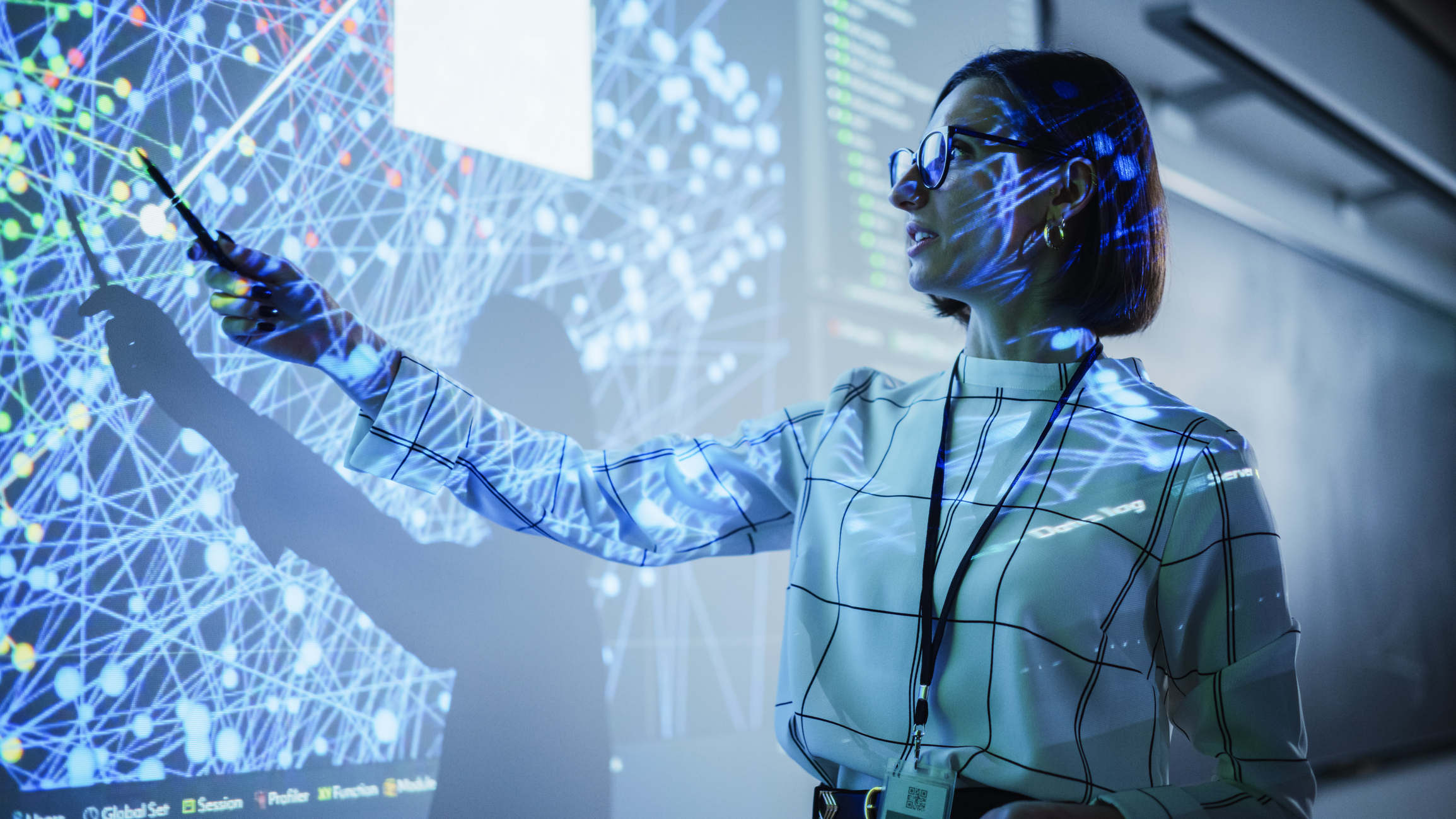
The decade-old technology of artificial intelligence (AI) recently experienced its “iPhone moment” and, thanks to Generative AI such as ChatGPT, became suitable for the mass market in a spectacular way. In the SAP environment, AI is not a completely new phenomenon either. There are tangible use cases in which AI generates great added value.
We estimate that around 90% of our customers are already using AI in some form. Accordingly, AI has been an important part of cbs projects for several years. With the use of machine learning, data science, and generative AI approaches, major efficiency gains can be realized. It is crucial, however, not to view the application of technology as an end in itself, but to use it consistently and in a focused manner in the areas where the value creation takes place: in the SAP processes.
Our AI experts at cbs have established a categorization to create clarity and transparency regarding application purposes. We differentiate between four areas of application for AI in SAP processes, depending on the depth of integration and the level of responsibility it assumes.
Human Machine Interface

In a human machine interface (HMI), AI is used to improve the interfaces between people and IT systems and to facilitate data input and queries. With SustAI, for example, we have developed a chatbot that provides intuitive access to ESG legislation. Instead of laboriously poring through hundreds of PDF pages of legal texts, we can ask the chatbot questions and receive well-founded answers based on the documentation and customer-specific data from the backend system. In this way, chatbots based on LLMs can also be used to communicate with an SAP system using natural language.
Another example of the use of AI in HMIs is the automated capture of data from the physical world using image and text recognition. For example, we have developed a Fiori app for shunting workers that allows them to capture information simply and directly by pointing data glasses at the wagon labeling. The desired identification number is extracted using a pre-trained model and then used to retrieve relevant information from the SAP system via a UI5 app in order to control the associated processes.
AI-optimized HMIs make work considerably easier and increase the accessibility of SAP, such as data, KPIs, forecasts and metrics, even for users without SAP knowledge, such as blue-collar workers.
Operational Intelligence

AI also provides decision-making support in terms of operational intelligence in day-to-day business. For example, we have implemented an AI-supported production planning system that provides planners with the optimal sequence of individual production orders for the coming week, thereby maximizing plant capacity utilization. The AI suggests the most efficient processes based on pre-trained models and the analysis of patterns in real-time data, with humans only taking the final control.
The use of AI in operational intelligence therefore makes it possible to automate routine tasks and provide decision-makers with well-founded recommendations, which significantly improves strategic planning and operational execution.
Intelligent Automation

In the course of supporting business processes with AI, we can also take the next step: We actively integrate AI into the execution of SAP processes and let it execute them automatically. An illustrative example of this is the automatic assignment of repair and maintenance orders that we have implemented. An algorithm takes over the entire daily planning for the service technicians. The orders are assigned directly using an optimization algorithm, without a service delivery manager having to check this assignment manually.
The use of AI in service and maintenance planning enables a significant increase in efficiency and customer satisfaction. By automatically and optimally assigning orders, service technicians can perform their work more effectively, reducing order processing times and improving the quality of customer service.
Cognitive Processes

AI can also work completely autonomously, without human intervention being necessary or possible. This creates new, AI-driven processes. The best example of this is predictive maintenance. Instead of carrying out regular inspections according to a fixed schedule, we use historical and real-time data and historical experience to make precise predictions about when maintenance measures are actually required.
AI is also used to monitor processes using anomaly detection, for example to discover fraud. Here, AI continuously analyzes processes that are too complex to comprehend for a human, identifies irregularities, blocks transactions and reports them accordingly. This significantly increases security, as AI can efficiently process vast amounts of data in a short amount of time that humans would hardly be able to do.
Outlook
AI is a transformative force that will eventually find its way into every area of the company and every SAP process. It is already creating efficiency, reducing the workload of employees and delivering significant competitive advantages.
Which AI project can we support you with? We have designed our new AI:mpact workshop format to support you in your individual AI transformation and work with you to identify potential uses cases for your company.
Your AI:mpact Contact



